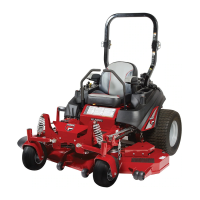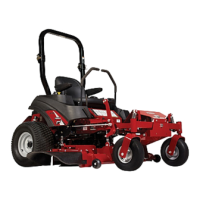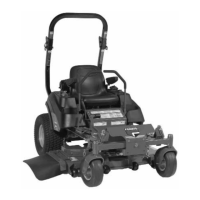What causes excessive mower deck vibration in my Ferris Lawn Mower?
- EEdward RyanSep 2, 2025
Excessive mower deck vibration in your Ferris Lawn Mower can be caused by loose blade mounting bolts (tighten to 120 ft. lbs. / 163 N.m.). Bent mower blades, arbors, or pulleys should be checked and replaced if necessary. Out-of-balance mower blades should be removed, sharpened, and balanced. An incorrectly installed belt needs to be reinstalled correctly.





